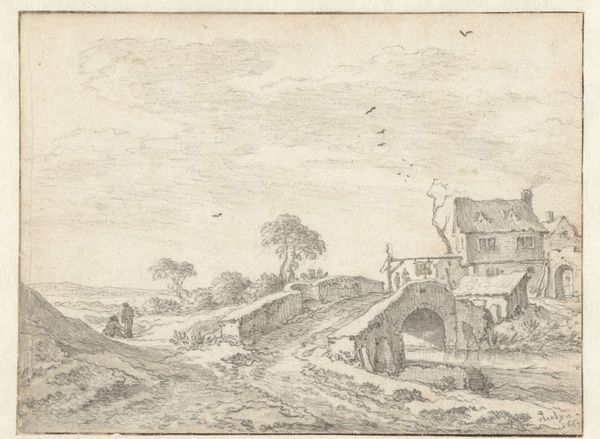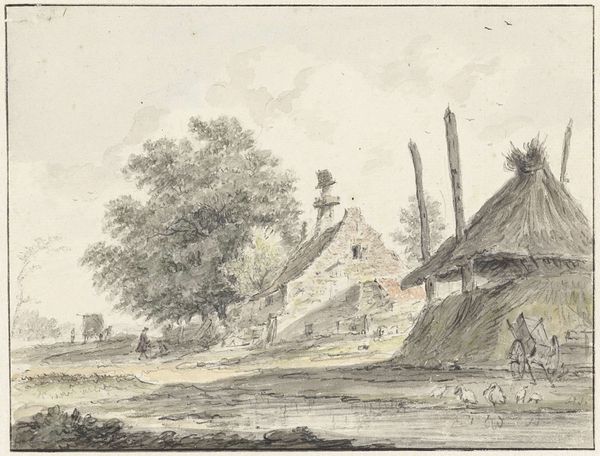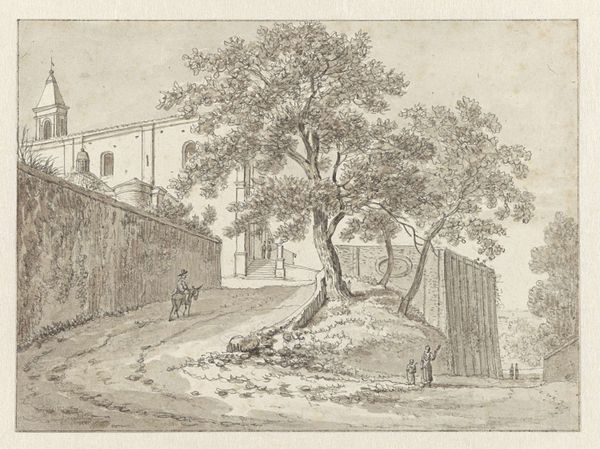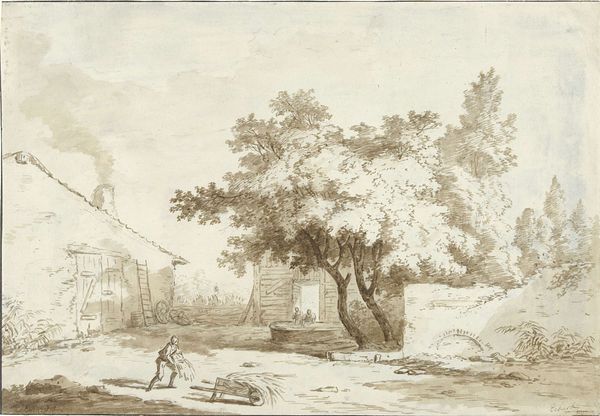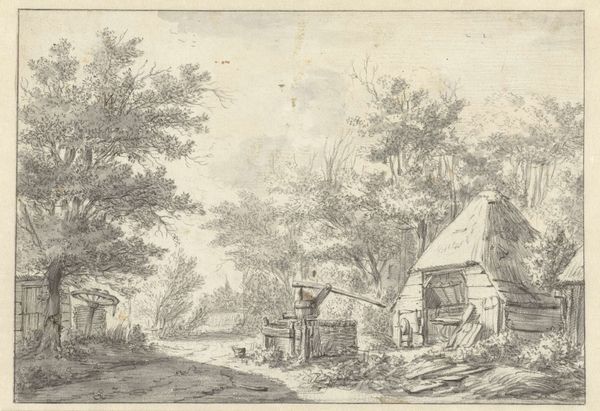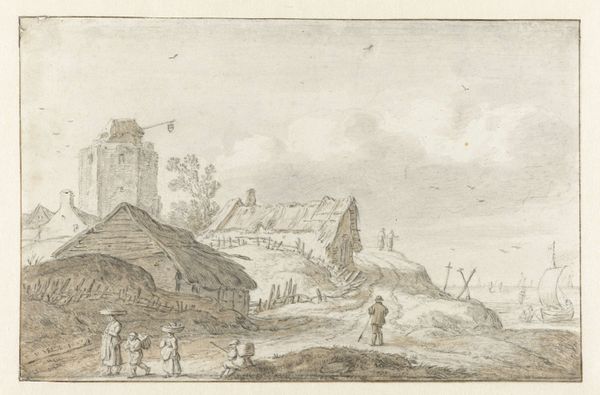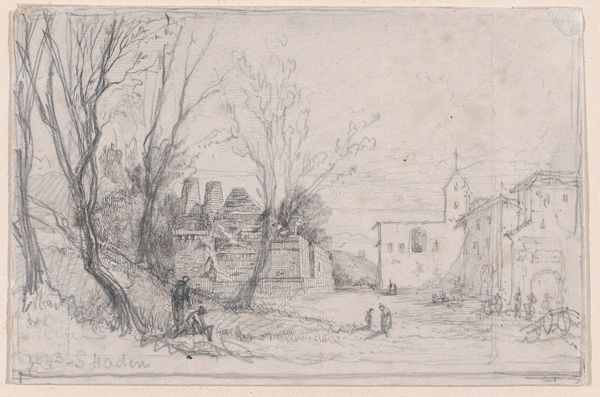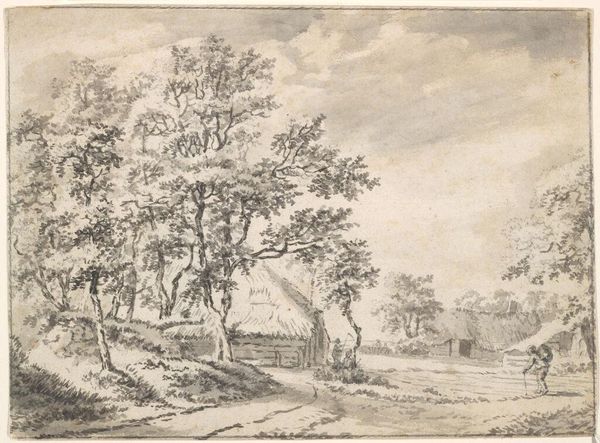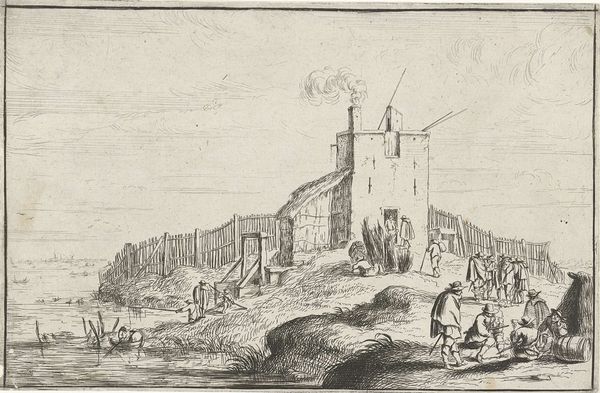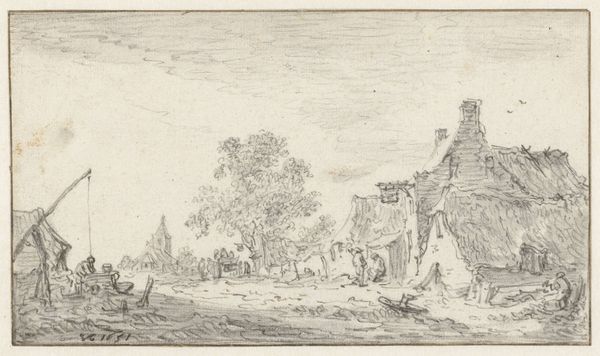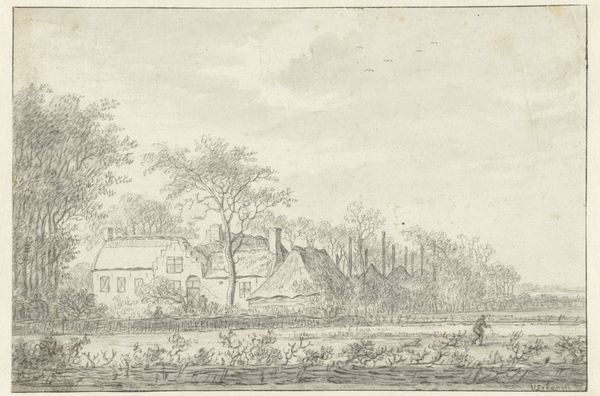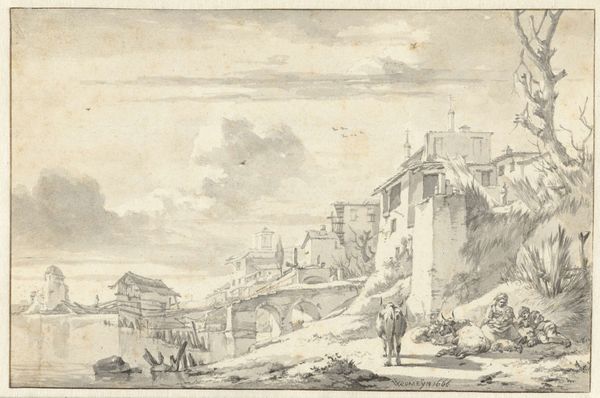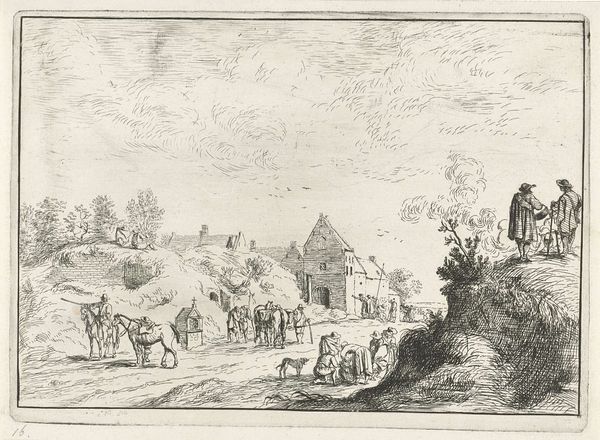
drawing, watercolor, architecture
#
drawing
#
baroque
#
landscape
#
watercolor
#
cityscape
#
watercolor
#
architecture
Dimensions: height 110 mm, width 218 mm
Copyright: Rijks Museum: Open Domain
Curator: This watercolor drawing before us is entitled "Italianate Landscape with a Stone Bridge" by Hendrik van der Straaten, dating back to around 1685-1689. It offers a glimpse into the artistic interests of the late 17th century. Editor: My immediate impression is one of tranquil decay. The soft washes create a muted, almost dreamlike atmosphere, but that crumbling bridge hints at something a bit more complex, a passing of time perhaps, the transformation from use to something more ornamental. Curator: It's interesting you pick up on the idea of "decay." Landscapes of this era were often idealized, but I see hints of a changing social fabric within this one, even a reflection of growing urbanization. That bridge isn’t just an aesthetic element; it suggests trade routes and connection, or the remnants thereof. Editor: The figures on the bridge and in the foreground also pull me in. The interactions feel significant. There's definitely a visual conversation happening between class and labor that requires closer consideration. The very inclusion of a church gives me food for thought, in respect to religious contexts that were common at this time. Curator: Exactly! How does the inclusion of this landscape speak to Dutch identity, even if portraying a decidedly Italianate scene? We have to consider that patronage structures were very powerful, particularly the economic prosperity influencing what was desired by collectors in terms of subject matter. The way these narratives unfold politically, culturally, becomes very significant. Editor: Absolutely. It's a window into how perceptions of Italy – its history and even its ruins – became fashionable amongst a certain class. You have to then consider how landscape as genre became entwined with narratives of power and social display. This opens up dialogue around colonialism, identity, and access. Curator: This definitely invites us to think about who controlled the means of visual representation, who profited from it, and how landscape as a genre evolved into this powerful, multi-layered vehicle. Editor: It makes you wonder who can even afford to travel, buy these pieces and what did travel look like in that era. This beautiful but slightly unsettling watercolor really pushes you to examine intersectional realities across space and time. Curator: I agree; hopefully this glimpse behind its facade invites a deeper engagement. Editor: Absolutely, so much to unpack, which in turn, allows us to expand perspectives and dialogues.
Comments
No comments
Be the first to comment and join the conversation on the ultimate creative platform.
